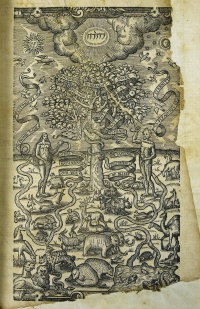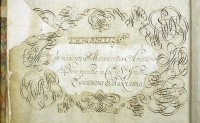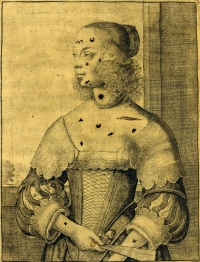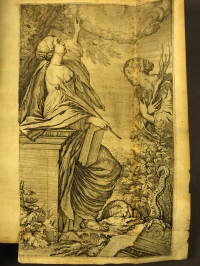Thy most coruscant vest
Edward Benlowes (1602-76) studied at St John’s in the early 1620s, and went on to devote his considerable wealth to the patronage of poetry and other arts. A devotee, to quote his DNB entry, of ‘emblem books, rich engravings, fine bindings, metaphysical conceits, and witty expressions of all kinds, including obscure puzzles and anagrams’, and having installed a rolling press at his mansion Brent Hall, Benlowes combined his enthusiasms and resources to produce several unique presentation copies of his poem Theophila, or, Loves Sacrifice (1652).

Nature, put on thy most coruscant vest;
Thy gaieties show, brought to this test,
As a crude jelly dropt from dusky clouds at best
are nonsensical or beyond paraphrase; indeed, that’s quite an easy one. But as the sublime and transcendent are necessarily beyond the reach of language, there is a notable extent to which tonal and semantic inconsistency or inaccuracy are to be embraced as working in the poem’s favour. Even the stanza structure—triplets of approximately iambic pentameter, tetrameter and hexameter—is indicative, in its consistent inconsistency, of restlessness, of a desire line by line to attempt a different angle of approach.


Benlowes’s home was destroyed by fire the year after Theophila’s publication: this significantly reduced his financial capacity without, of course, cancelling his debts, and he lived the rest of his life rather like a poet in need of a patron, library-bound (in Oxford’s Bodleian) and poor. On his death, several scholars who remembered and respected his work contributed money towards his funeral.
This Special Collections Spotlight article was contributed on 13 October 2014 by Adam Crothers, Library Assistant. Library-bound and poor, he also writes about the literary vestiges of St John’s for PN Review.

